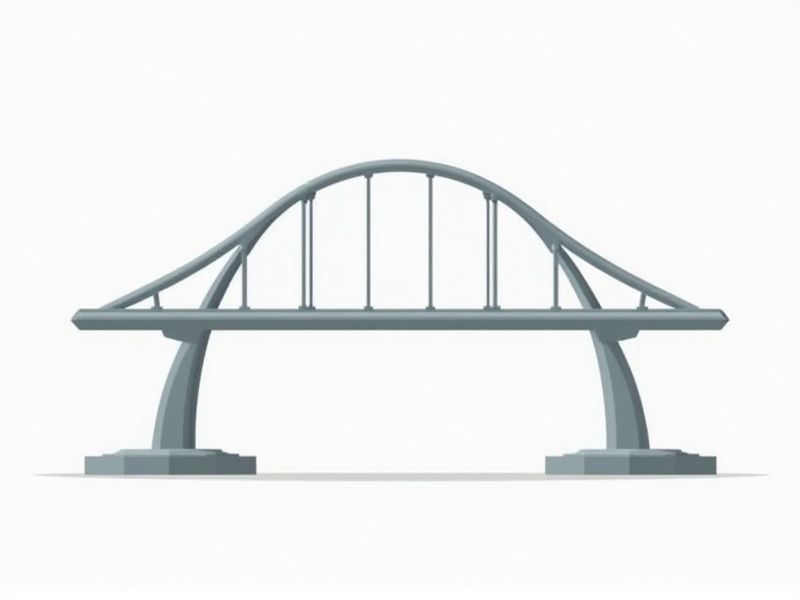
The standard dimensions of a bridge can vary widely depending on its intended use, location, and type (such as highway, pedestrian, or railway bridge). Generally, the typical width for a two-lane road bridge ranges from 24 to 28 feet, which allows for two standard 12-foot lanes. The vertical clearance is usually at least 14 to 16 feet to accommodate vehicles and ensure safe passage. It's important to check local and national codes, like the American Association of State Highway and Transportation Officials (AASHTO) guidelines, for specific requirements, as these standards help ensure that bridges are both safe and functional for their users.
Span Length
The standard span length of a bridge significantly influences its design and structural integrity, often ranging from 50 feet to over 8,000 feet for the longest suspension bridges. Engineers typically categorize spans into short, medium, and long categories, with short spans under 50 feet and long spans exceeding 300 feet. For example, the Akashi Kaikyo Bridge in Japan boasts a main span of 6,532 feet, making it the longest suspension bridge in the world. This span length requires advanced engineering techniques to ensure safety and durability, emphasizing the importance of considering span length in bridge design.
Width
The standard bridge width varies significantly based on its purpose and location, generally ranging from 12 to 40 feet. A typical two-lane highway bridge should have a minimum width of 24 feet to accommodate vehicular traffic safely. For pedestrian or bike paths, the recommended width is at least 10 feet, ensuring comfortable and safe passage. Ensuring that your bridge meets these width standards can significantly reduce traffic congestion and enhance the overall safety of users.
Height
The standard height for bridge clearance is typically set at 16 to 18 feet, allowing adequate space for trucks and other large vehicles to pass safely. Design considerations must account for various factors, including the flood elevation, local regulations, and environmental impacts. Bridges constructed with a standard height enhance safety and accessibility, accommodating an estimated 80% of commercial traffic without restrictions. You may find that bridges with adequate vertical clearance improve overall traffic flow and reduce delays.
Load Limits
The standard load limits for bridges are crucial for ensuring safety and structural integrity, often categorized into different classes based on design specifications. For example, the American Association of State Highway and Transportation Officials (AASHTO) sets vital standards, recommending vehicular load limits ranging from 18,000 to 40,000 pounds per axle, depending on bridge classification. Each bridge undergoes rigorous evaluations, including load rating assessments, to determine its maximum capacity. Regular maintenance and inspections are essential, with many bridges designed to withstand specific operational limits over their expected lifespan of 50 to 100 years.
Clearance
Bridge clearance standards vary significantly depending on location and purpose, with typical height measurements ranging from 14 to 16 feet for roadways. For navigation, the minimum vertical clearance for bridges over navigable waters is often set at 35 feet, allowing ample space for vessels to pass safely. You must also consider that state and federal regulations may impose additional criteria based on regional traffic and weather patterns. Ensuring compliance with these standards is crucial to maintaining safety, accessibility, and functionality of transport routes.
Abutment Dimensions
Abutment dimensions are crucial in bridge design, ensuring adequate support for the structure. Typically, the width of abutments ranges from 1.5 to 2 times the width of the bridge deck, while the height often varies between 2 to 3 meters based on foundation depth and soil conditions. Proper sizing alleviates stress from vertical loads and lateral forces, contributing to the global stability of the bridge. For your project, consider incorporating these guidelines to optimize structural integrity and safety.
Pier Dimensions
The standard bridge pier dimensions typically adhere to the guidelines set by the American Association of State Highway and Transportation Officials (AASHTO), which recommends a minimum width of 2 feet for reinforced concrete piers in highway bridges. Height requirements may vary from 6 to 10 feet, depending on the bridge's design and environmental considerations, such as flood levels and soil stability. The pier's clear span should accommodate any expected traffic loads, with most specifications recommending a load capacity of at least 1,000 pounds per square foot. Proper pier design ensures structural integrity, safety, and longevity, making it essential for engineers to prioritize dimensional standards in bridge construction.
Beam Size
In structural engineering, the standard beam size for bridges typically varies depending on the load requirements and span length. For example, a common size for highway bridges is a beam width of 12 to 24 inches, while spans exceeding 100 feet might necessitate beams measuring up to 36 inches in width. Proper beam sizing ensures adequate support, maintaining safety and durability throughout the bridge's lifecycle. When designing your bridge, consider factors such as material type and environmental conditions, as these significantly influence beam performance and dimensional requirements.
Deck Thickness
Deck thickness is a critical parameter in bridge design, often ranging from 15 to 30 centimeters, depending on the type of bridge and load requirements. A thicker deck typically enhances durability and load-bearing capacity, essential for supporting heavy vehicular traffic and dynamic forces. Engineers conduct thorough analyses to ensure that the chosen thickness meets safety standards and prolongs the structure's lifespan. Your understanding of deck thickness can significantly influence bridge performance and maintenance planning.
Expansion Joints
Expansion joints in bridge construction are critical for accommodating thermal expansion and contraction, potentially extending the structure's lifespan by 30% or more. Typically, these joints are designed to handle temperature fluctuations ranging from -30degC to +60degC, ensuring structural integrity during extreme weather changes. Proper installation and maintenance of expansion joints can prevent costly repairs, reducing long-term maintenance costs by up to 20%. Regular inspections are necessary, with a recommended frequency of every 2-3 years, to assess wear and functionality, helping maintain the safety and performance of your bridge.
